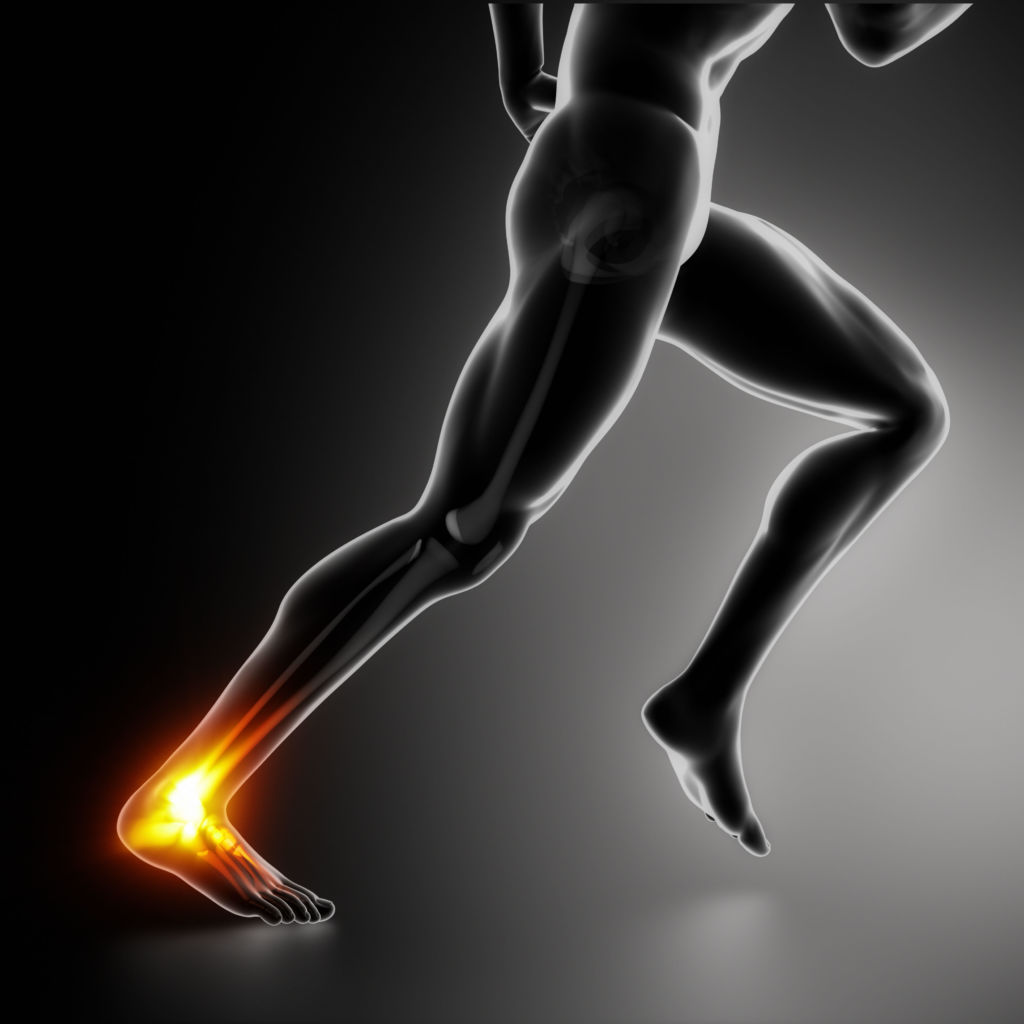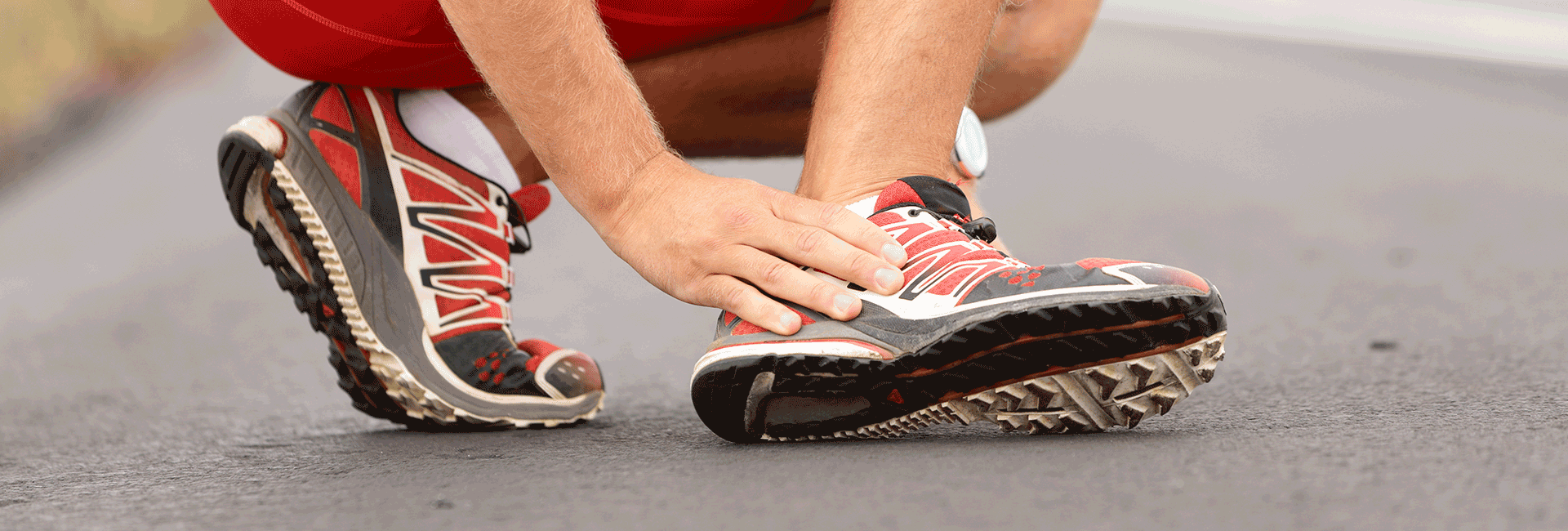What causes Achilles tendon pain?
Pain in the Achilles tendon generally occurs due to repetitive motions during athletic and recreational play, especially during activities involving running or jumping. These motions can cause micro-traumas or tears to the tendon – a fibrous band of tissue that links the muscles in your calf to your heel – which results in inflammation and pain.
This condition makes itself apparent through pain which is commonly located where the tendon passes behind the ankle or where the Achilles attaches at the back of the heel.
Although this condition is commonly called Achilles tendinitis, Achilles tendonosis is often a more appropriate diagnosis. While the term tendinitis refers to the acute inflammation of a tendon, tendonosis refers to a reoccurring, long-term problem. Tendonosis is a degenerative condition that will cause a tendon to become less efficient. Achilles tendonosis is not only painful, but it can cause you to become less proficient at the recreational hobbies you enjoy and may lead to dysfunction at the knee, hip, and/or spinal joints as they compensate for the inefficiencies at your ankle.
In more extreme cases the tears in the Achilles tendon can lead to rupture, where the tendon has a partial break or tear. When this happens, you’ll likely hear a loud pop from your heel or calf area. This situation warrants immediate medical attention.
How do you relieve Achilles tendon pain?
If you believe you have Achilles tendinitis or tendonosis, fortunately a variety of treatments can effectively relieve the discomfort of these conditions. The steps below should put you on the right track.

Treatment for Achilles tendon pain
-
REST
Let your tendon rest. Taking some time off from the activity that places the most stress on this region will allow the inflammation in your tendon to subside which will result in more efficient tissue healing. This doesn’t mean that you have to become completely inactive, simply modifying your activities within pain-free ranges can be effective. Try swimming or biking for a few weeks rather than running or playing basketball. Or simply decrease the time, distance or intensity you spend performing the painful activity so that you can participate at a pain-free level. -
STRETCH
This would also be an appropriate time to begin icing and stretching your painful tendon. The runner’s stretch is an excellent option to provide relief by loosening the tendon. To perform this stretch simply place your hands on a wall or chair, step the leg you need to stretch out behind you and press your heel to the floor while bending your other knee forward. Lean forward to feel a stretch, but not far enough to feel pain. Alternatively, you can simply pace your toes up against a wall until you feel a stretch in the Achilles tendon. Whichever way you stretch, be sure to move slow, don’t bounce and stop if you feel pain. -
PHYSICAL THERAPY
In addition to rest and stretching, a variety of treatments offered by Therapeutic Associates can shorten the time needed to recover from Achilles tendinitis or tendonosis. In the acute phases of inflammation, modalities such as iontophoresis, ultrasound, icing and Kinesiotaping can be effective. Manual interventions include hands-on soft tissue therapy as well as use of the Astym® System. Astym® is a type of instrument-assisted soft tissue mobilization that has been shown to aide in the recovery of chronically sore tendons (>6 weeks). -
EXERCISE
Loading your tendon and the muscles that attach to it allows for gentle grading of acceptable forces to the healing tendon. Following a few weeks of active rest, it will be time to start strengthening/loading your Achilles. This will allow for improved tissue performance as well as potential prevention of another painful episode. There are countless different ways to load your calf muscles and Achilles tendon but the following is a very simple, effective and researched technique.
Eccentric Loading
This technique, called “eccentric loading,” focuses on the slow-loaded lengthening of the muscle/tendon complex. Stand with the balls of your feet on the edge of a step and hold onto the railing or the wall for balance. Raise your heels up as high as possible using 50/50 effort on both sides. Once at the top, shift your weight to the affected Achilles tendon and pause for 1-2 seconds. Then, slowly lower weight down ONLY on the affected side. Doing 3 sets of 15 reps 2-3x/day can assist in recovery from Achilles tendon issues.
It’s okay if you experienced some pain during the exercise as long as you are able to walk away when finished not feeling worse than when you started. If you have pain during the exercise and your Achilles tendon pain is worse as you walk away after doing the exercise, consider modifying the total amount of motion by making it smaller or by allowing the non-affected side to assist during the lowering phase of the exercise.
There are many different factors that can contribute to the cause of Achilles tendon pain. Often, the cause of the tendon pain can come from a different body region not moving the way it should. This can happen even though the source of the tendon pain is locally felt in the Achilles. If the cause is not addressed, often localized treatment to the source of pain will have limited long-term effectiveness. As experts in musculoskeletal health and function, physical therapists have the education and experience to help determine the cause of your injury and pain and to help you on your road to recovery. You don’t have to deal with this frustrating condition on your own, we’re here to help.
Start your journey to pain-free living today.
If you’re experiencing achilles tendinitis or tendonosis, our physical therapists can help. As musculoskeletal experts, we can determine what’s causing your condition and work with you to create an individualized plan for treatment and recovery as well as helping you to avoid the problem in the future.



